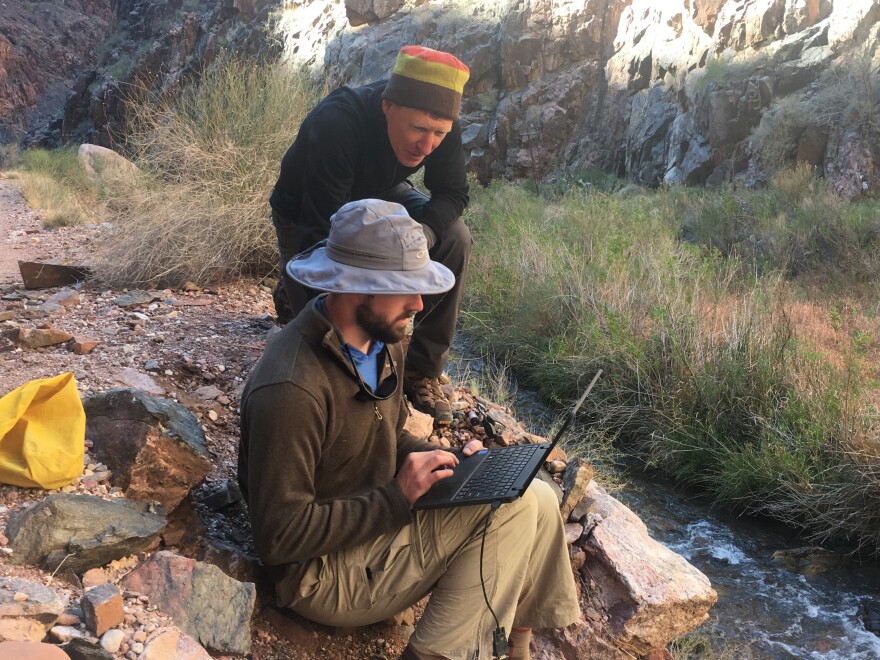The water we drink when we’re at Grand Canyon National Park comes from a deep aquifer that channels it through a series of caves and sink holes inside the canyon walls.
No one knows how complicated this journey is or how much groundwater is stored in the system. But Northern Arizona University hydrogeologist Abe Springer is trying to find out. He says a spring is a window into an aquifer.
“It’s important to monitor springs because they are the most accessible place to understand the aquifer and how it responds to climate change and into our human uses of it,” he says.

Today, we’re at Roaring Springs, located 3,500 feet below the North Rim. It’s the main source of water that feeds Bright Angel Creek, which quenches the thirst of 6 million visitors, plus 3,000 residents at the Grand Canyon each year. To get to the source, it’s a 20-mile hike through rugged backcountry, and a rock climb into a watery cave.

“So, it’s very important to understand the sustainability of the source at the springs to affect the sustainability of the water supply intake that the park needs. The source of water for Bright Angel Creek, wherever the intake is, is sourced from springs that come from the aquifer, the Redwall Muav Aquifer. The future security of the park’s water supply depends on the security of a dependable, reliable source of water from that aquifer from the springs.”
Springer’s research will help the National Park Service understand the reliability of drinking water at the Canyon, especially in the face of a warmer, drier climate.









